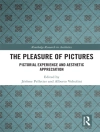In ‘Chardin, ‘ Paul G. Konody delivers a meticulous examination of the celebrated eighteenth-century French painter Jean-Baptiste-Siméon Chardin. The work is presented in a rich, descriptive literary style that marries art critique with visual analysis, effectively drawing the reader into the serene world of Chardin’s still lifes and domestic scenes. Set against the backdrop of the Enlightenment, Konody articulates how Chardin’s deft manipulation of light and color serves not only to depict reality but also to evoke emotional resonance within the viewer. The book also contextualizes Chardin’s oeuvre within the broader currents of French art, portraying his unique ability to blend genre painting with a philosophical exploration of everyday life. Paul G. Konody, a noted art historian and critic, brings a wealth of knowledge to this exploration of Chardin’s work. His scholarly journey was shaped by extensive study in European art movements, which likely ignited his interest in capturing the subtleties of Chardin’s artistry. Konody’s analytical rigor and appreciation for the painter’s contributions reflect his profound respect for the art’s cultural and historical significance, emphasizing the timeless relevance of such works. ‘Chardin’ is a must-read for art enthusiasts, students, and scholars alike. With Konody’s expert insights and engaging prose, readers will not only gain a deeper appreciation for Chardin’s mastery but also a greater understanding of the interplay between art and humanity during a pivotal moment in artistic history.
Circa l’autore
Paul G. Konody (1872-1933) was a noteworthy art critic and author of the early 20th century whose scholarship and expertise extended to various realms of visual arts. Born in England to a Hungarian father and an Italian mother, Konody cultivated a diverse cultural perspective that informed his critical writings and curatorial work. An expert on Old Masters and contemporary art movements alike, he became widely recognized for his articulate and insightful analyses of European paintings and artists. Konody’s profound knowledge is evident in his monograph on the French painter Jean-Baptiste-Siméon Chardin, simply titled ‘Chardin’ (1930), wherein he delves into the life and works of the 18th-century master, celebrated for his still-life compositions and domestic scenes. The book compiles a comprehensive assessment of Chardin’s oeuvre and explores the subtlety and quietude intrinsic to his works, affirming Konody’s scholarly acumen. Konody’s literary style, marked by an eloquent yet accessible discourse, positioned him as a respected figure among art historians and the reading public. His ability to discern and articulate the nuances of artistic expression rendered his contributions to art literature both valuable and enduring. Konody’s legacy as a critical voice of his time continues to influence the study and appreciation of European art history.












